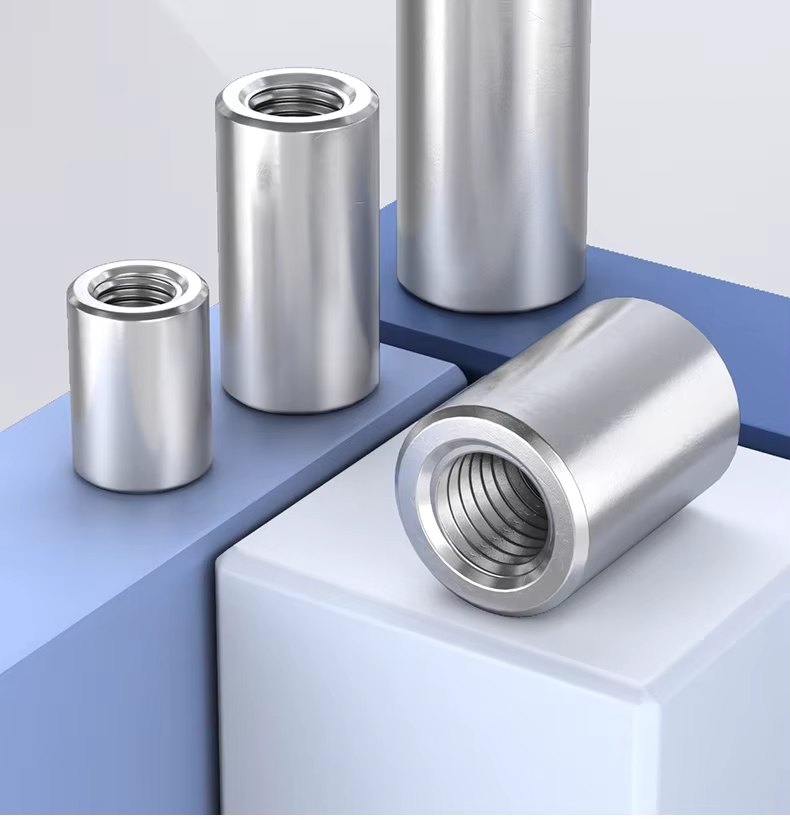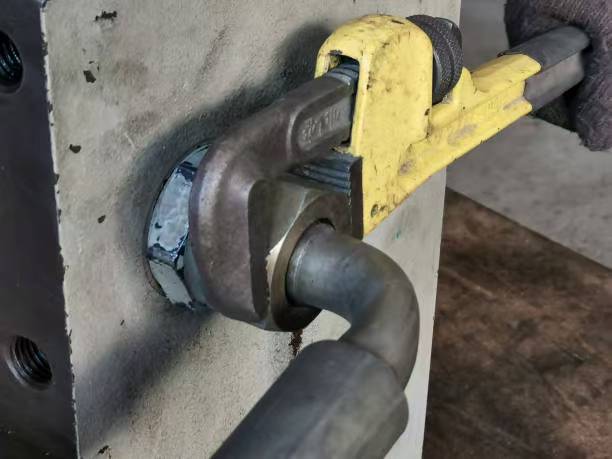A coupling nut is a type of fastener featuring an extended cylindrical body with internal threading, designed to provide additional thread engagement or spacing compared to standard nuts. It is commonly used in applications requiring increased load-bearing capacity, alignment, or height adjustment.


Long nuts are manufactured from a variety of materials to suit different environmental and mechanical requirements:
- Steel: The most common material, available in grades such as A36, 1018, 4140, and stainless steel (304, 316). Steel nuts offer high strength and durability.
- Stainless Steel: Ideal for corrosion-resistant applications, such as marine, food processing, or outdoor environments.
- Brass: Used in electrical and plumbing applications due to its non-magnetic properties and good conductivity.
- Aluminum: Lightweight and corrosion-resistant, suitable for aerospace or automotive applications where weight is critical.
Coupling Nuts find use across numerous industries, including:
1. Construction: For joining structural components, especially where extra thread depth is needed for vibration resistance.
2. Automotive & Aerospace: In engine mounts, suspension systems, and aircraft components requiring precise spacing and secure fastening.
3. Machinery & Equipment: As spacers or standoffs in conveyor systems, pumps, and manufacturing machinery.
4. Electronics: In PCB mounting and rack systems to maintain component alignment and isolation.
5. Oil & Gas: In harsh environments where corrosion resistance and high load capacity are essential.
6. DIY & Custom Projects: For hobbyists and engineers needing adjustable height or custom spacing solutions.
Installing a typically involves the following steps:
1. Prepare the Surface: Ensure the mating surface is clean, flat, and free of debris.
2. Select the Correct Bolt: Use a bolt with compatible thread size, pitch, and length to ensure full engagement (at least 1.5x the diameter of the bolt is recommended for long nuts).
3. Thread Engagement: Hand-thread the long nut onto the bolt or insert it into the tapped hole, ensuring smooth and consistent threading.
4. Tightening: Use appropriate tools (wrenches, torque wrenches) to tighten the assembly to the recommended torque specifications, avoiding over-tightening which can damage threads.
5. Locking (if required): In high-vibration applications, consider using lock washers, thread-locking compounds (e.g., Loctite), or nylon-insert lock nuts in conjunction with long nuts.

Our factory delivers long nuts that stand out in quality, performance, and value—backed by decades of engineering expertise and a commitment to customer success. Here’s what sets us apart:
- Manufactured to ISO/DIN/ANSI standards with tight tolerances (Class 2B/6H threads).
- Rigorous in-line and final inspections ensure zero defects—every nut meets or exceeds industry specifications.
- Full material traceability with mill certificates and test reports provided on request.
- Customize materials (stainless steel 304/316, alloy steel 4140, brass, aluminum), coatings (zinc, galvanized, black oxide), and designs (hex/round/knurled, blind threads).
- No minimum order quantity